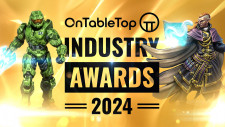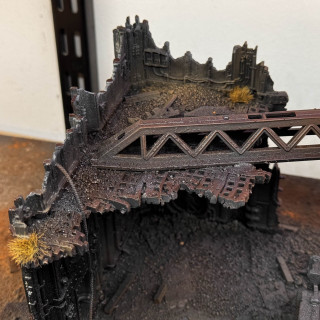
So I won a copy of Hivestorm in a raffle…
Recommendations: 84
About the Project
So I recently won a copy of Kill Team: Hivestorm in a raffle and decided, instead of tossing the terrain away to someone else, I would use terrainfest as an excuse to hold onto it and make something of it. The idea is to make a board that I can use to ACTUALLY PLAY Kill Team, and also use as a "set" for miniature photography. So going into this project with the idea of making ot functional as a gaming board and pretty enough to make a good backdrop.
Related Game: Warhammer 40,000: Kill Team
Related Company: Games Workshop
Related Genre: Science Fiction
Related Contest: TerrainFest 2024
This Project is Active
WEEDs ...
It’s probably a good time to mention I have been doing this project with the express aim of not buying “new” materials to work on it. This is why my choices of grass tufts are sort of all over the place. I raided my drawers and boxes for anything I’d used that -somewhat- fits the scheme of the board.
Lucky for me I like apocalyptic looking basing styles, so dead grass is something I generally have to hand!
applying the tufts in clumps here and there, and mixing the types together gives a nice “derelict”appearance to the buildings and the rubble surrounding them.
Like I said, the bicarbonate of soda really has become a pain in my backside, and although it’s not the WORST I do not want it as a major element of the ground work….
Next time, of Dragon Ball-…….John fumbles through a Kill team board build…












































